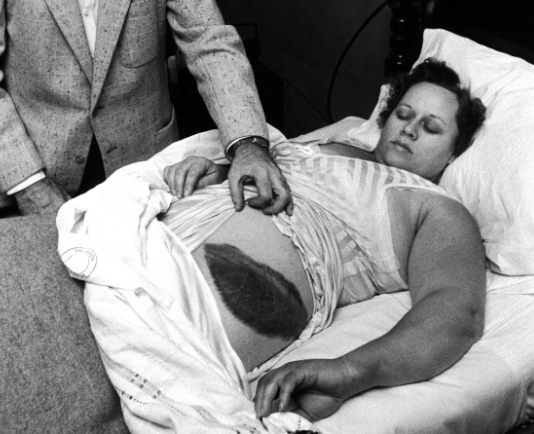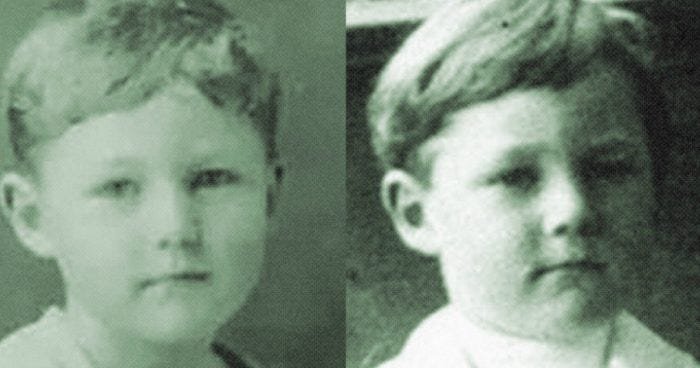Fear of disease is ubiquitous for humans. Examples range from the Black Plague that decimated populations for centuries, to the mysterious, deadly rabies virus that has only recently been understood.
Disease is often invisible and moves through the suffering silently. In 1943, three doctors in an Italian hospital weaponized this fear of disease, but not to cause harm.


Instead, they used it to save some of the most vulnerable people in Italy at times: the Jews.
“Syndrome K” was a fake disease invented by Italian doctors Adriano Ossicini, Giovanni Borromeo, and Vittorio Emanuele Sacerdoti to protect Jewish patients and refugees during World War II.
In this article, we’ll explore Syndrome K, how the fake disease saved lives, and the men who risked their own lives to make the syndrome believable.
The History Of Nazi Persecution In Italy
To understand the genesis of Syndrome K and why it was necessary to save lives, you first need to know Italy’s atmosphere in 1943 and 1944.
By September 1943, Benito Mussolini’s fascist regime had fallen and Nazi forces were occupying Italy. Things were looking especially dire in Rome, where residents of the Jewish ghetto were being captured in large numbers and sent to concentration camps.
There was a Jewish hospital in the city, but it was a clear target for the Nazi occupiers.
Less of a target was Fatebenefratelli Hospital. Fatebenefratelli, a Catholic hospital, had stood for hundreds of years. Being a Catholic hospital, it was less of a concern for the Nazis.
Little did they know that three heroes who worked in Fatebenefratelli were determined to help the persecuted Jews in any way they could.
Fatebenefratelli Hospital
In the beginning, Fatebenefratelli Hospital didn’t draw much attention from the Nazis. Located on a tiny river island called Tiber Island, the hospital had been built in the footprint of an ancient temple to the god of medicine, Asclepius.
Established in 1585, the hospital and the temple before it were known as a haven for the poor and less fortunate who needed medical care. It was given the name “Fatebenefratelli” which means “You do well, brothers”.
When Nazi forces began to occupy Italy in the 1940s, Fatebenefratelli Hospital had recently been converted from a hospice to a modern hospital by Doctor Giovanni Borromeo and Father Maurizio Bialek.
Later, both Borromeo and Maurizio would help fabricate the Syndrome K ruse.
Jewish doctor Vittorio Emanuele Sacerdoti was also working with them. Italy had already introduced a number of antisemitic laws in 1938, which would have made it hard for the Jewish Sacerdoti to work in the Catholic Fatebenefratelli Hospital.

Fortunately, Borromeo and the other higher-ups and the hospital allowed Sacredoti to work under a fake name with falsified papers. It would be this perfect placement that would set the creation of Syndrome K into motion.
The Creation Of Syndrome K
Tensions for Jews living in Rome were already high in 1943. To keep Jewish patients safe, Dr. Vittorio Sacerdoti asked permission to start transferring them from the Jewish hospital to Fatebenefratelli.
Sacerdoti got the approval for his plan from Borromeo and Father Bialek, and he slowly began to transfer the Jewish patients over.
Things reached a fever pitch on October 16, 1943, when Nazi forces began a raid on the nearby Jewish ghetto. Fleeing their homes, the Jewish residents crossed the Tiber River bridge, arriving at Tiber Island and the sanctuary of Fatebenefratelli Hospital.
Having to act quickly, Borromeo brought the refugees into his hospital and swiftly put them in quarantine. Dr. Borromeo and the other doctors were aware that Nazis were terrified of infectious diseases–understandably so, with how prevalent tuberculosis was at the time.
With their Jewish patients hidden in quarantine, Borromeo, Sacerdoti, and anti-fascist doctor Adriano Ossicini devised a genius plan–a fake disease to scare the Nazis away from the Jews in the hospital.
Playing on that fear of disease–tuberculosis specifically–Syndrome K came into existence.
It was Dr. Adriano Osscini who first suggested the name “Syndrome K”. The thought behind the name was that the Nazis would assume the “K” stood for “Koch disease”, another name for tuberculosis.
Tuberculosis, a debilitating obstructive pneumonia, had been discovered by Dr. Robert Koch, hence its alternative name.
In reality, Osscini drew inspiration not just from Dr. Koch, but also chose the name to represent two of the worst perpetrators of violence against the Roman Jews–Luftwaffe officer Albert Kesselring and the head of German police in Rome, Herbert Kappler.
From that moment forward, the label “Syndrome K” would be put on Jewish refugee’s charts to indicate to other doctors that the patient wasn’t actually sick. Instead, they were a Jew in hiding.
Symptoms Of Syndrome K
Syndrome K needed more than just a name to be intimidating, though. In order to keep the Nazi investigators at a distance, Syndrome K needed to be more than scary–it needed to be terrifying.
The list of symptoms that the doctors would attribute to the fictional Syndrome K would be enough to give anyone pause. They ranged from a terrible cough to paralysis, and an eventual, unavoidable death.
Here is a list of symptoms associated with Syndrome K:
● Dementia
● Seizures and convulsions
● Paralysis
● Trouble breathing leading to asphyxiation
● Death
When asked about the disease, the Fatebenefratelli doctors would tell the Nazis that Syndrome K was an incredibly contagious neurological disease with no cure. This was why the patients had to be kept in a strict quarantine.
When Nazi investigators did make it into the hospital, the supposed sufferers of Syndrome K were instructed to fake a terrible, loud, wheezing cough to imitate tuberculosis. They were also told to intentionally appear frail and ill.
Did Syndrome K Save Lives?
Although the Catholic Fatebenefratelli Hospital had drawn less attention than the nearby Jewish hospital, they wouldn’t expect to go unnoticed forever. Eventually, the Nazis appeared at the hospital doors and demanded to search the facility for any Jews.
By this time, all of the staff at Fatebenefratelli had been briefed on the Syndrome K medical deception.
The Jewish people suffering from the fake illness were also familiar with the part they had to play–pretending to be devastatingly sick with something contagious.
Borromeo and the rest of his staff were forced to admit the Nazis, but their plan went off without a hitch.

Upon being told about the mysterious Syndrome K and both hearing and seeing the ill patients in quarantine, the Nazis balked at the idea of getting any closer. Above all else, they didn’t want to risk infection with something as terrible as they believed Syndrome K to be.
“The Nazis thought it was cancer or tuberculosis, and they fled like rabbits,” Vittorio Sacerdoti would say.
Of course, this wasn’t the last time the Nazis were supposed to search the premises of Fatebenefratelli Hospital.
Amazingly, fear of the fictional Syndrome K, known as Il Morbo di K by the Italian doctors, didn’t just keep the Nazi visits brief.
On multiple occasions, it was noted that the Nazis skipped searching in and around Fatebenefratelli altogether because of Syndrome K, even when they were actively searching other nearby areas.
With a constant influx of refugees, the hospital was in danger of running out of space in their Syndrome K quarantine. To combat this, the staff of the hospital would work together to move refugees to safer locations, where they would hopefully avoid Nazi detection until the end of the war.
When one of these safer locations was found, or when the Jewish patient was able to be smuggled out of Italy to somewhere under Allied control, a fake death certificate would be issued.
As one might expect, the fake death certificate would state that the person had died from Syndrome K, further perpetuating the myth of the fake disease.
Unfortunately, the solution wasn’t a perfect one. In the spring of 1944, five Jewish refugees from Poland were discovered during a rare search of the hospital. All five of them were taken away.
Despite this setback, the Syndrome K ruse was incredibly successful. While exact numbers vary, it’s thought that the doctors and staff of Fatebenefratelli Hospital managed to save around 100 Jewish lives.
The Legacy Of Syndrome K
As World War II finally wound to a close, Fatebenefratelli Hospital was slowly able to resume business as usual. Yet even after the war, the legacy of Syndrome K and the lives it saved lived on.
On June 21, 2016, Fatebenefratelli Hospital was declared a “House of Life” by the Raoul Wallenberg Foundation. According to the foundation’s website, Houses of Life is a “New worldwide initiative aimed at keeping alive the memory of rescue feats during the Holocaust.”
All three of the doctors who invented Syndrome K survived the war. This includes Vittorio Sacerdoti, the Jewish doctor who worked at Fatebenefratelli under a false name and who was himself in hiding.
Dr. Giovanni Borromeo would be declared “Righteous Among the Nations”, a designation given by Yad Vashem, Israel’s Holocaust remembrance center.
Sources
https://hekint.org/2021/08/17/syndrome-k-and-the-fatebenefratelli-hospital













Leave a comment